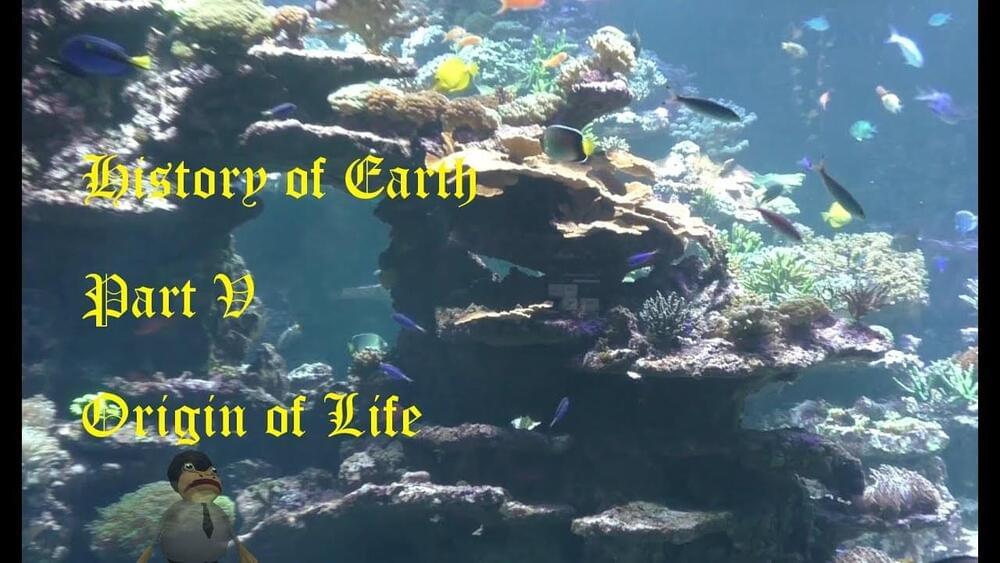Nov 26, 2022
History of Earth — Part 5 — Origin of Life
Posted by Dan Breeden in category: chemistry
This is an Approach to explain how life came to earth. It’s a story of chemistry, I hope this will not be to boring ;).

This is an Approach to explain how life came to earth. It’s a story of chemistry, I hope this will not be to boring ;).

What happened in the 2 Billion years after the emergence of Life, between 3.5 and 1.5 billion years? More than I once thought.
Earlier this year, we announced our vision to empower any developer to become a space developer through Azure. With over 90 million developers on GitHub, we have created a powerful ecosystem and we are focused on empowering the next generation of developers for space. Today, we are announcing a crucial step towards democratizing access to space development, with the preview release of Azure Orbital Space SDK (software development kit)—a secure hosting platform and application toolkit designed to enable developers to create, deploy, and operate applications on-orbit.
By bringing modern cloud-based applications to spacecrafts we not only increase the efficiency, value, and speed of insights from space data but also increase the value of that data through the optimization of ground communication.
Many of the fundamental technological improvements that have accelerated the growth of Internet of Things (IoT) in the past decade remain untapped by space development missions today. With the Azure Orbital Space SDK, we will help bring those improvements to space through modern agile software deployment, container-based development, use of higher-level languages, and cloud-managed networking. Extending the power of the Azure cloud into space means that spacecraft development will take less time, cost less, and bring more people into the space development ecosystem.
Researchers at the University of Maine on Monday unveiled what they say is a promising, climate-friendly response to the nation’s affordable housing crisis: the world’s first, bio-based 3D printed home.
University, state and federal officials joined Maine Gov. Janet Mills and U.S. Sen. Susan Collins at a ribbon-cutting ceremony to celebrate the 600-square-foot-home.
The home is made entirely from a wood-based material, which University of Maine researchers say is an inexpensive, renewable and recyclable building option.

To date, only a handful of countries have developed an independent launch capability. If all goes according to plan, Gilmour Space could enable Australia to become the 12th member of the club able to put its own rockets into space.
Founded in 2012, Australian company Gilmour Space is working on hybrid-engine rockets and associated technologies to support the development of low-cost space launch vehicles.
Continue reading “Australia’s first rocket planned for 2023” »
Mushroom-foam is as cheap as Styrofoam, requires no fossil fuel, and creates no plastic pollution, biodegrading in your garden in just a couple of weeks Ikea is switching to a new mushroom-based, biodegradable alternative to polystyrene (Styrofoam) packaging for its furniture and home decor. Known as Mycofoam, the product is […].
By Chuck Brooks
There are many other interesting trends to look out for in 2023. These trends will include the expansion of use of a Software Bill of Materials (SBOM), the integration of more 5G networks to bring down latency of data delivery, more Deep Fakes being used for fraud, low code for citizen coding, more computing at the edge, and the development of initial stages of the implementation of quantum technologies and algorithms.
When all is said and done, 2023 will face a boiling concoction of new and old cyber-threats. It will be an especially challenging year for all those involved trying to protect their data and for geopolitical stability.
Continue reading “A Boiling Cauldron: Cybersecurity Trends, Threats, And Predictions For 2023” »
Image and video editing are two of the most popular applications for computer users. With the advent of Machine Learning (ML) and Deep Learning (DL), image and video editing have been progressively studied through several neural network architectures. Until very recently, most DL models for image and video editing were supervised and, more specifically, required the training data to contain pairs of input and output data to be used for learning the details of the desired transformation. Lately, end-to-end learning frameworks have been proposed, which require as input only a single image to learn the mapping to the desired edited output.
Video matting is a specific task belonging to video editing. The term “matting ” dates back to the 19th century when glass plates of matte paint were set in front of a camera during filming to create the illusion of an environment that was not present at the filming location. Nowadays, the composition of multiple digital images follows similar proceedings. A composite formula is exploited to shade the intensity of the foreground and background of each image, expressed as a linear combination of the two components.
Although really powerful, this process has some limitations. It requires an unambiguous factorization of the image into foreground and background layers, which are then assumed to be independently treatable. In some situations like video matting, hence a sequence of temporal-and spatial-dependent frames, the layers decomposition becomes a complex task.
The Internal Ramp Theory for the Great Pyramid of Egypt is one of the most interesting ideas ever proposed for its construction. French architect Jean-Pierre Houdin has spent more than 20 years developing and refining this idea.
In October of 2022, Houdin published an update to his theory which reflects the ScanPyramids findings from the past six years. The ScanPyramids ‘Big Void’ is an intriguing clue that Houdin may be correct with his notion of the Grand Gallery being used as a counterweight ramp for the largest pyramid stones.
The ‘Big Void’ may be another Grand Gallery-like space which could be used for the same purpose. Institutional Egyptology remains unreceptive to Houdin’s publications, nor the extremely confident results from the ScanPyramids mission.
Memories are stored in all different areas across the brain as networks of neurons called engrams. In addition to collecting information about incoming stimuli, these engrams capture emotional information. In a new study, Steve Ramirez, a neuroscientist at Boston University, discovered where the brain stores positive and negative memories and uncovered hundreds of markers that differentiate positive-memory neurons from negative-memory neurons.
In 2019, Ramirez found evidence that good and bad memories are stored in different regions of the hippocampus, a cashew-shaped structure that holds sensory and emotional information necessary for forming and retrieving memories. The top part of the hippocampus activated when mice underwent enjoyable experiences, but the bottom region activated when they had negative experiences.
His team also found that they could manipulate memories by activating these regions. When he and his team activated the top area of the hippocampus, bad memories were less traumatic. Conversely, when they activated the bottom part, mice exhibited signs of long-last lasting anxiety-related behavioral changes. Ramirez suspected this difference in effect was because the neurons that store good and bad memories have different functions beyond simply keeping positive and negative emotions. However, before he could unravel this difference, he needed to identify which cells were storing good and bad memories. The results were published in the journal Communications Biology.
